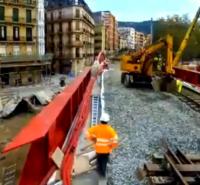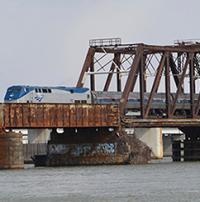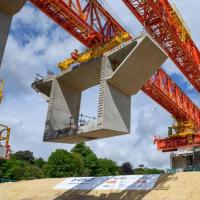He said that the plan will deliver a safer and more efficient Inland Rail whilst also backing thousands of extra jobs and billions of dollars in additional economic activity.
The design now includes more than 4,500 additional culverts, nine additional viaducts, an additional 6.8km of bridges, 10 extra grade separations and approximately 450km of additional fencing, as well as the removal of 139 level crossings.
McCormack said that the enhancements are a result of significant work by the Australian Rail Track Corporation (ARTC) to progress designs, to engage with communities and undertake the detailed analysis required to build the 1,700km rail line, including approximately 600km of greenfield track.
“Inland Rail is a jobs bonanza,” said McCormack. “It’s already supporting thousands of jobs, has already started to generate billions in economic activity and will eventually lead to a boost of more than $18 billion [US$13.6 billion] gross domestic product during construction and in the first 50 years of operation.”
“These enhancements will provide for greater local investment, mean Inland Rail will now support more than 21,500 jobs at the peak of construction and deliver an extra economic boost of $2 billion [US$1.5 billlion]. “Australian communities and industries have asked for more from this national infrastructure project and we have listened.
“These enhancements to the Inland Rail network will deliver more contracts for local businesses and more work for Australians at a time when we need them most.
“Inland Rail isn’t just being built by the big companies and Tier 1 contractors – across Australia businesses of all sizes are tendering for work and benefiting from the construction of Inland Rail.”
The line from Melbourne to Brisbane will be the ‘spine’ of the national freight network, enabling travel between Melbourne and Brisbane in less than 24 hours, while connecting major ports and all mainland state capitals, said McCormack.
The first section of Inland Rail, between Parkes and Narromine, is now completed and work has started on the 171km Narrabri to North Star section. Planning is also well advanced on other sections of the track, with the environmental impact statement (EIS) for the largest section between Narromine to Narrabri on public display and a further four statements expected to be released for the Queensland sections of Inland Rail in the coming months.





